Training to build maize breeding capacity in Africa
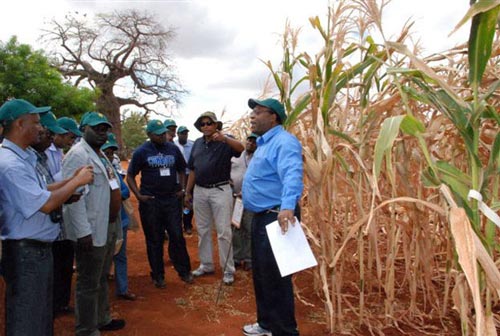 Thirty-six senior maize breeders from fifteen African countries participated in a course in Nairobi, Kenya, from 1 to 4 October 2012. The course attracted participants from national agricultural research systems, private seed companies, and universities collaborating within the Drought Tolerant Maize for Africa (DTMA) Initiative, Improved Maize for African Soils (IMAS) Project, Sustainable Intensification of Maize- Legume Systems for Food Security in Eastern and Southern Africa (SIMLESA) initiative, Sustainable Intensification of Maize-Legume Systems for the Eastern Province of Zambia (SIMLEZA), Water Efficient Maize for Africa (WEMA), and a USAID-funded project on heat stress in maize.
Thirty-six senior maize breeders from fifteen African countries participated in a course in Nairobi, Kenya, from 1 to 4 October 2012. The course attracted participants from national agricultural research systems, private seed companies, and universities collaborating within the Drought Tolerant Maize for Africa (DTMA) Initiative, Improved Maize for African Soils (IMAS) Project, Sustainable Intensification of Maize- Legume Systems for Food Security in Eastern and Southern Africa (SIMLESA) initiative, Sustainable Intensification of Maize-Legume Systems for the Eastern Province of Zambia (SIMLEZA), Water Efficient Maize for Africa (WEMA), and a USAID-funded project on heat stress in maize.
Throughout the course, breeders were introduced to new germplasm, recent advances in maize breeding for biotic and abiotic stresses, breeding informatics tools (e.g. IMIS-Fieldbook and IB-Fieldbook developed by the Generation Challenge Program), approaches to improving quality of phenotyping, molecular breeding tools, and the use of doubled haploid technologies in maize breeding. They also visited fields in Kiboko to assess breeding nurseries and yield trials and to interact with CIMMYT breeders.
The course participants had the opportunity to attend presentations by a private-sector representative. Walter Trevisan from WEMA/ Monsanto covered the origin of maize and importance of the heterotic pools in maize breeding around the world. “We learn from the partnership that we can work as a team and, most of the time, reach goals ahead of time,” said Trevisan, stating that he is looking forward to the future projects such as WEMA II. “We really enjoy working with CIMMYT and the national agricultural research systems,” he added.
According to Ntji Coulibaly from Mali, training for breeders helps to build capacity within African countries. “Mali has only five seed companies serving the country, thus it is imperative to build the skill base in breeding,” he explained. Coulibaly then praised CIMMYT for its leadership role in breeding in Africa: “It has raised the bar for private institutions to improve and develop better products in the region.” Bhola Verma from ZAMSEED, a private seed company operating in Zambia, also appreciated the training initiative. “We need to train more people,” he said, reiterating the importance of training the next generation of breeders to ensure the continent does not lag behind. Zubeda Mduruma, Tanzanian maize breeder from Aminata Quality Seed, was excited about -her newly gained knowledge on doubled haploid breeding technology. “It is very handy and will shorten our time for breeding,” said Mduruma. Doubled haploid technology enables breeders to save time and labor costs associated with conventional breeding, while allowing them to get varieties benefiting farmers within a shorter period of time.
Simon Gichuki, Kenya Agriculture Research Institute (KARI) Biotechnology Program coordinator, urged participants to explore and use the technological tools, and to train breeders working with them. Gichuki said that the key challenges facing African agriculture include diseases, pests, and climate change. “We feel that we can contribute to mitigating these [challenges] by engaging in science,” said Gichuki, adding that this could be achieved by ensuring that breeders regularly update their knowledge. “In crop science things move very fast,” he explained. Sylvester Oikeh, WEMA project manager at the African Agricultural Technology Foundation, urged participants to embrace mentorship and share their knowledge and skills with young breeders. Oikeh also appreciated the opportunity to see what DTMA is doing in relation to WEMA’s breeding work.
Shehu Ado from the Institute for Agricultural Research, Samaru, Nigeria, said the training would benefit his students. “I will encourage my students to apply it in their own work,” said Ado about Fieldbook, “my students are going to gain a lot as analysis will be simplified.” Thokozile Ndlela, Zimbabwean Ministry of Agriculture, expressed her excitement about the developments made in Fieldbook, as well as the new advancements in maize breeding.
The course facilitators were drawn from CIMMYT, Generation Challenge Program, and Monsanto. The course was coordinated by Cosmos Magorokosho and Stephen Mugo, CIMMYT maize breeders from Zimbabwe and Kenya, respectively.
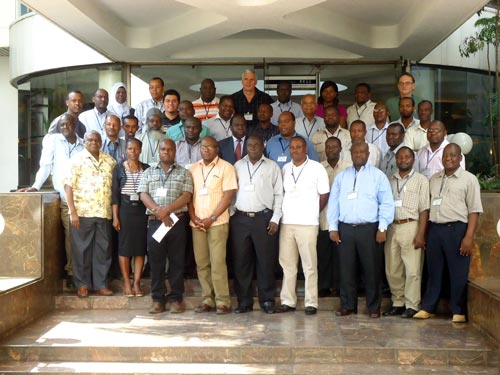
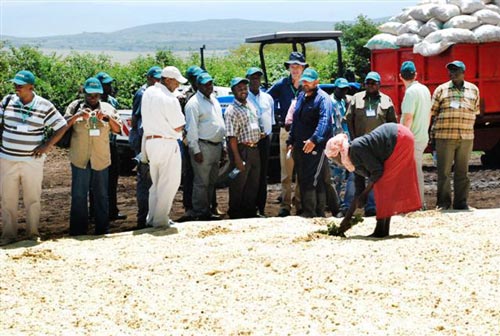
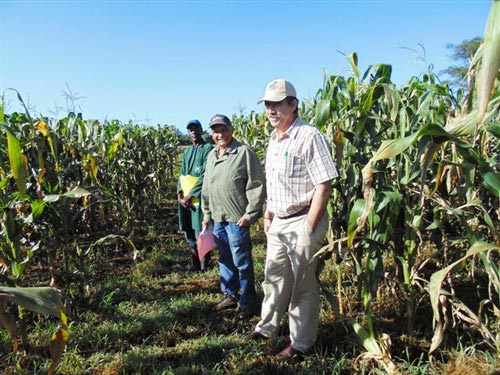 Strengthening and enhancing seed systems is critical to ensure that released varieties reach the ultimate beneficiary — the farmer, and that farmers, especially smallholders, are able to access improved maize seed varieties from seed companies who are often key players in the maize value chain. This is why scientists working on seed systems at CIMMYT met with seed companies at the Uganda Seed Trade Association (USTA) meeting during 19-20 September 2012 in Kampala, Uganda. CIMMYT was represented by seed system specialists John MacRobert and Mosisa Worku, whose objective was to create awareness on new drought tolerant (DT) maize varieties and roadmaps for their seed production. The meeting was attended by 12 participants representing 9 seed companies, along with representatives from USTA.
Strengthening and enhancing seed systems is critical to ensure that released varieties reach the ultimate beneficiary — the farmer, and that farmers, especially smallholders, are able to access improved maize seed varieties from seed companies who are often key players in the maize value chain. This is why scientists working on seed systems at CIMMYT met with seed companies at the Uganda Seed Trade Association (USTA) meeting during 19-20 September 2012 in Kampala, Uganda. CIMMYT was represented by seed system specialists John MacRobert and Mosisa Worku, whose objective was to create awareness on new drought tolerant (DT) maize varieties and roadmaps for their seed production. The meeting was attended by 12 participants representing 9 seed companies, along with representatives from USTA.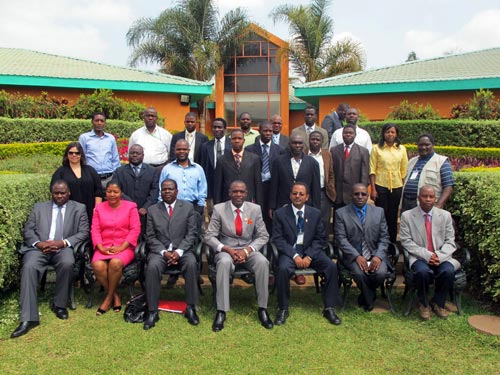
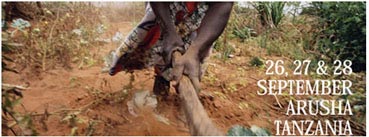 “We have arrived at the tipping point and are not taking Africa’s Green Revolution to scale,” said Kofi Annan during the opening session of the 2012 African Green Revolution Forum which took place in Arusha, Tanzania, from 26-28 September. The forum gathered 1,000 participants from ministries of agriculture, industry, and the international donor community. CIMMYT was represented by Wilfred Mwangi. Melinda Gates of the Bill & Melinda Gates Foundation (
“We have arrived at the tipping point and are not taking Africa’s Green Revolution to scale,” said Kofi Annan during the opening session of the 2012 African Green Revolution Forum which took place in Arusha, Tanzania, from 26-28 September. The forum gathered 1,000 participants from ministries of agriculture, industry, and the international donor community. CIMMYT was represented by Wilfred Mwangi. Melinda Gates of the Bill & Melinda Gates Foundation (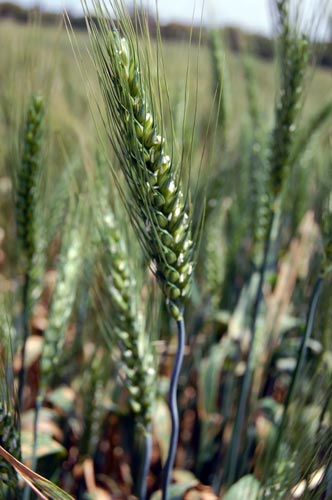 It was another exhausting, but productive day at the Wheat for Food Security in Africa conference at Addis Ababa, culminating in a wonderful evening of traditional dancing and the Injera cuisine so typical of Ethiopia. In case you missed any of our live tweeting during the day (#W4A), here is a brief roundup of the main events. It would be impossible to describe everything that happened in one short post, but this was a day likely to produce impacts in the months to come.
It was another exhausting, but productive day at the Wheat for Food Security in Africa conference at Addis Ababa, culminating in a wonderful evening of traditional dancing and the Injera cuisine so typical of Ethiopia. In case you missed any of our live tweeting during the day (#W4A), here is a brief roundup of the main events. It would be impossible to describe everything that happened in one short post, but this was a day likely to produce impacts in the months to come.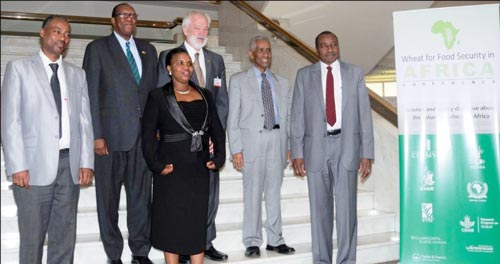
 After two days in
After two days in 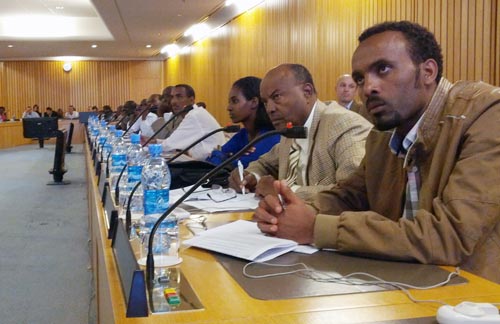 An exhausting, productive day on Day Two of Wheat for Food Security in Africa. Participants arrived bright and early for expert presentations and round-table discussions on abiotic/biotic stresses, market and seed systems, wheat systems and quality, and country outlooks.
An exhausting, productive day on Day Two of Wheat for Food Security in Africa. Participants arrived bright and early for expert presentations and round-table discussions on abiotic/biotic stresses, market and seed systems, wheat systems and quality, and country outlooks.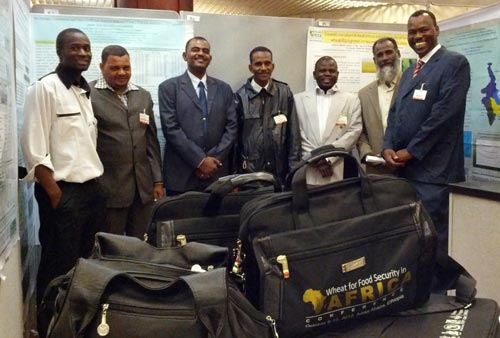
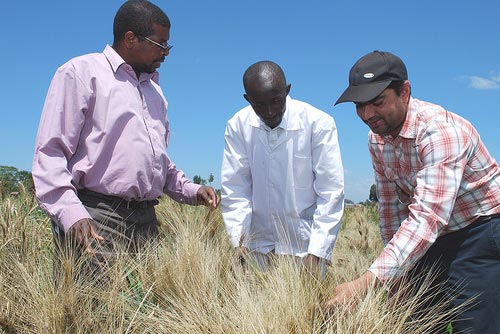
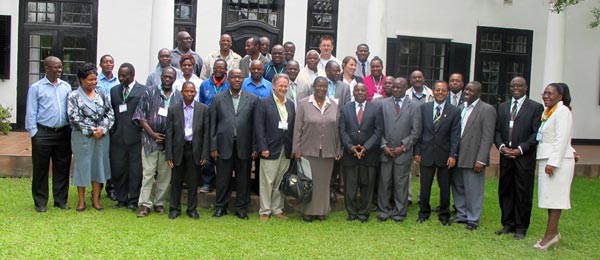
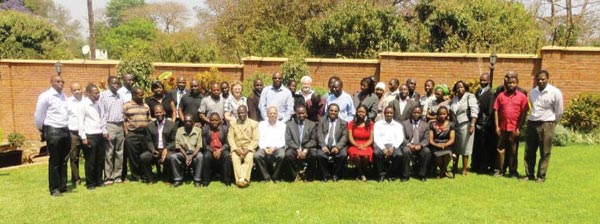
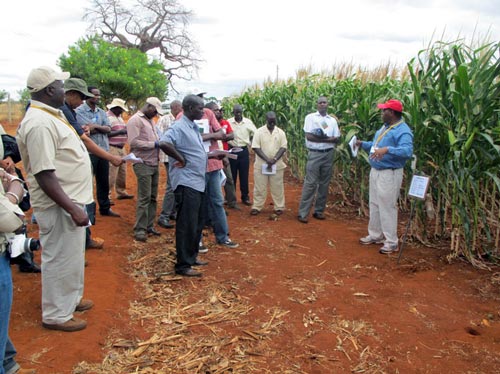 Twenty-nine drought-tolerant, early maturing, disease-resistant hybrids developed by the Water Efficient Maize for Africa (WEMA) project are getting ready to be released, a huge success for WEMA and all its stakeholders. “The 29 hybrids advanced to national performance trials is a record release by an entity in Africa in all times. These high performing hybrids yield 20–35 % more grain under moderate drought compared to 2008 commercially available hybrids,” said Stephen Mugo, CIMMYT principal scientist and co-chair of the WEMA Product Development Team. “Let us seize the technological opportunities that are there to boost productivity and people’s welfare,” he added. The white hybrids resistant to stem borers, maize weevils, and large grain borer, and to diseases such as grey leaf spot, northern leaf blight, and maize streak virus will complement other drought tolerant hybrids developed and released by the Drought Tolerant Maize for Africa (
Twenty-nine drought-tolerant, early maturing, disease-resistant hybrids developed by the Water Efficient Maize for Africa (WEMA) project are getting ready to be released, a huge success for WEMA and all its stakeholders. “The 29 hybrids advanced to national performance trials is a record release by an entity in Africa in all times. These high performing hybrids yield 20–35 % more grain under moderate drought compared to 2008 commercially available hybrids,” said Stephen Mugo, CIMMYT principal scientist and co-chair of the WEMA Product Development Team. “Let us seize the technological opportunities that are there to boost productivity and people’s welfare,” he added. The white hybrids resistant to stem borers, maize weevils, and large grain borer, and to diseases such as grey leaf spot, northern leaf blight, and maize streak virus will complement other drought tolerant hybrids developed and released by the Drought Tolerant Maize for Africa (